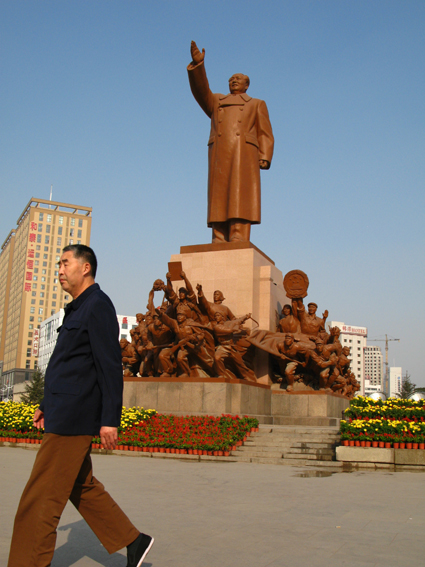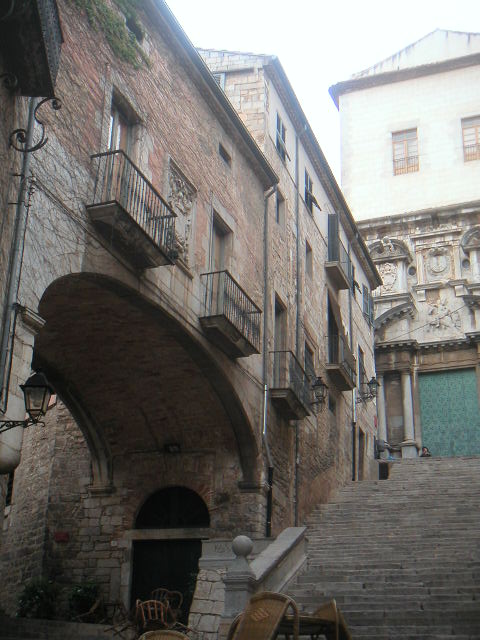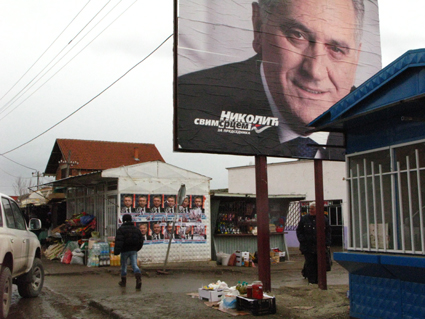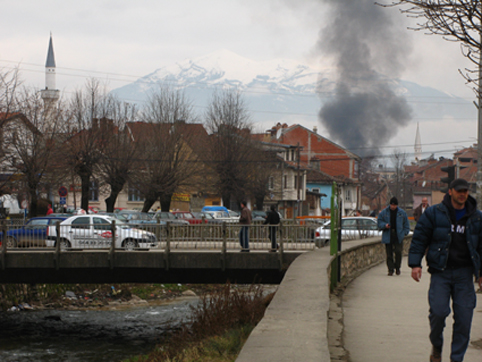It was raining hard the morning after Easter when I sat down at a dingy café in Zugdidi, a town on Georgia’s border with Abkhazia, and waited with trepidation to meet my guide. A tour operator in the capital Tbilisi had arranged the rendezvous and I knew nothing about the guide except that he was a Svan – an important detail, I was told, since travelers to the remote Svaneti range of the Caucasus Mountains were warned not to go the road alone. Governed by their own language and customs, ancient honor codes and fierce loyalties to clan, the Svans were seen by many Georgians as a lawless people best known for kidnappings, road robberies and murders. The region had been ravaged in Georgia’s 1992-93 war with breakaway Abkhazia. In 2004 the President of Georgia, Michali Saakashvili, proclaimed “the Al Capone era in Georgia” over after he sent in 10 helicopters and a 200-man swat team to wipe out one of Svaneti’s leading mafia families. Tourism, which had virtually died, was clawing its way back when I visited a few years later.
Travel
Light at the Middle of the World
Sitting on a bench in the dirt-floor living room of his house in the Amazon, the yucca farmer Danilo Orguera proudly displays the head of a jaguar that he harpooned four years ago in a nearby river: an enduring symbol of the coexistence here between man and nature. Yet while their closeness to wilderness still embodies the Quechua jungle experience, Danilo’s 25-year-old schoolteacher nephew, Jose Daniel, says that what’s needed most now in Amazonian communities like these is photovoltaics (PV). Earlier this summer, engineers came to their remote village, named Curaray, and installed a 1.6 kilowatt array of solar modules; the system now powers three water pumps, filling a 50,000-liter tank which delivers clean drinking water for the first time to all 350 residents in the community.
To Light an Island
Our canoe docks next to some thatched huts on the tiny island of Soledad Mirya and we’re greeted by a small dark Indian man wearing green corduroy slacks, a black fedora, a checkered tie and a necklace strung with shark’s teeth. His name is Roy and he is the sayla, or chief, of this Kuna community – one of 40 groups scattered out among the hundreds of low lying, sand- and coconut-strewn San Blas Islands, otherwise known as the Kuna Yala, located several miles off the Caribbean coast of Panama.
Energy Thirst
That was the question I asked when I met in July with Panama’s somewhat combative Energy Secretary, Juan Urriola, and the one-word answer I got was this: hydropower. Panama currently produces 750 megawatts of hydroelectric energy each year, or 60 percent of the national total, he told me. Now, with $1.7 billion (1.34 billion euro) invested in 17 new hydro projects – some of which will be completed as early as next year – that means an additional 600 megawatts.
In Tanzania, adventure without forgoing amenities
 During my final hours in the Serengeti, while waiting for a bush plane to fly me from the Grumeti River back to the Tanzanian capital, Dar es Salaam, I met an American couple delighted not only because they were on honeymoon but because they’d found an affordable, upscale safari like this one to take them off the beaten path.
During my final hours in the Serengeti, while waiting for a bush plane to fly me from the Grumeti River back to the Tanzanian capital, Dar es Salaam, I met an American couple delighted not only because they were on honeymoon but because they’d found an affordable, upscale safari like this one to take them off the beaten path.
Fired in Stone: A Serbian Monk Burns Through Kosovo
Gracanica – The German peacekeeper is no older than twenty. Blond, skinny, cradling a machine gun half his size, he approaches our Jeep at the razor-wired bridge gate and tells the monk – my driver – to step out. Father Pimen curses under his breath. The only people Pimen hates more than the Americans who bombed his country are the NATO soldiers who have occupied it ever since. “No pictures,” the boy guard warns as he waves us through.
Mysterious Manchuria is Worth Trip Off Beaten Path
The guidebook refers to it as Dongbei, but I prefer to call the region by its more mysterious and, to my ear, more menacing-sounding name. Its syllables evoke images of isolation, freezing temperatures and war, a place few would recommend you visit, and most simply shake their heads as if to say it’s off limits. Or at best disagreeable. But it was a warm early October, I had 10 days left on my Chinese visa, and I was determined to prove the voices wrong. Places, after all, need rediscovering. So I looked down one last time at the map, at those three jagged-shaped, oddly named provinces way up there in the north, and bought my ticket to—Manchuria.
Tours follow Sephardic Routes
For Aida Oceransky, life as a Jew in Spain today isn’t the silent burden it used to be. When she emigrated to Asturias from her native Mexico in 1968, Oceransky didn’t dare talk about her family’s Ukrainian Jewish past. All the Jews she knew in the 1970s and ’80s went to Mass. Even a decade ago, “you couldn’t find anything on Judaism in Spain—a magazine, a book, nothing,” she said.
Who Blinks First?
As renewed Serb protests this week in Bosnia and elsewhere demonstrate, the storm unleashed by Kosovo’s Feb. 17 declaration of independence is far from abating. Rather, what recent events have shown is the start of a long and protracted struggle that, in the end, the West probably cannot win. Why? Because we’re not talking about a few hundred flag- and embassy-burning rioters as the media, the U.S. government and a chagrined Belgrade leadership speaking last week would have us believe.
Kosovo’s Dilemma
Tensions are high, violence is flaring and bombs have exploded in the aftermath of Kosovo’s declaration of independence on Sunday. But as Kosovo leaders and NATO peacekeepers worry about the Serbs’ volatile short-term response to their historic province being stripped away, they are ignoring an even bigger security threat at stake in the region: what to do about the country’s 30,000 ex-KLA fighters, most of whom are jobless, poor, disillusioned—and armed to the teeth.



